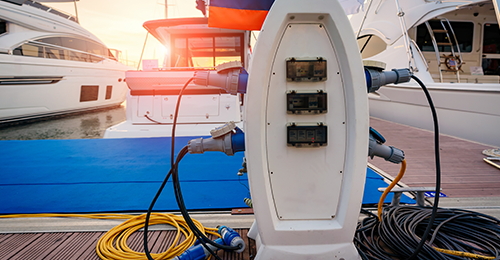Hangzhou Guheng Energy Technology Co., Ltd.
New energy service technology solution expert
Menu

1. Industry Background
Electric ships refer to ships that use power batteries as their power devices. In recent years, with the continuous decline in the cost of lithium-ion batteries and the continuous optimization of their performance, electric ships have ushered in a period of rapid development. In particular, lithium iron phosphate batteries have obtained type certification from the China Classification Society due to their safety and long life, laying a solid foundation for the widespread application of electric ships. However, during long-term use, the battery life decreases, and at this time, the electric ship battery must be balanced and maintained.
2. Why do batteries need to be balanced?
The significance of battery balancing is to use power electronics technology to keep the voltage deviation of lithium-ion battery cells or battery packs within the expected range, thereby ensuring that each single cell remains in the same state during normal use to avoid overcharging or over-discharging.
The battery pack is composed of multiple single cells. Due to the differences in the battery manufacturing process, manufacturing materials, and working environment, there are inconsistencies in the single cells inside the battery pack. The inconsistency of power batteries refers to the inconsistency of capacity, resistance, and voltage. The most intuitive manifestation of inconsistency is the different battery voltages.
The charging and discharging of the battery pack is controlled by the BMS. If the SOC of a single cell in the battery pack is higher than that of other cells, this single cell will be fully charged first during the charging process, and the charging of other single cells will stop even if they have not reached the rated capacity.
Similarly, if the SOC of a battery cell is lower than that of other cells during the load process, it will reach the discharge cut-off voltage first during the discharge process, and other cells cannot be released even if they still have residual capacity. The charging and discharging of the cells in the battery pack follows the “barrel theory”, and the highest/lowest cut-off voltage is controlled by the cell that reaches the cut-off voltage first. Therefore, if you want to increase the effective capacity of the battery pack and extend the range of new energy vehicles, you must balance it.
3. Battery balancing method
Battery balancing is generally divided into two types: passive balancing and active balancing.
Active balancing method :
Active balancing technology achieves balancing by precisely controlling the charging and discharging process of each battery cell.
Passive balancing method :
Passive balancing technology uses external resistors or special discharge devices to consume excess energy. Multi-channel balancing maintenance equipment can be used, such as the 48-channel PBM-PW-B-4805
PBM-PW-B-4805
By connecting the battery pack with a balancing harness, the voltage difference problem in the battery pack of an electric ship can be improved. If the channels are not enough, you can also choose a balancing maintenance device with more channels, such as the 64-channel PBM-PW-B-6405.
 |
 |
PBM-PW-B-6405
The device uses an aviation plug and a customized wiring harness to connect the battery to ensure the stability of the charging and discharging process.